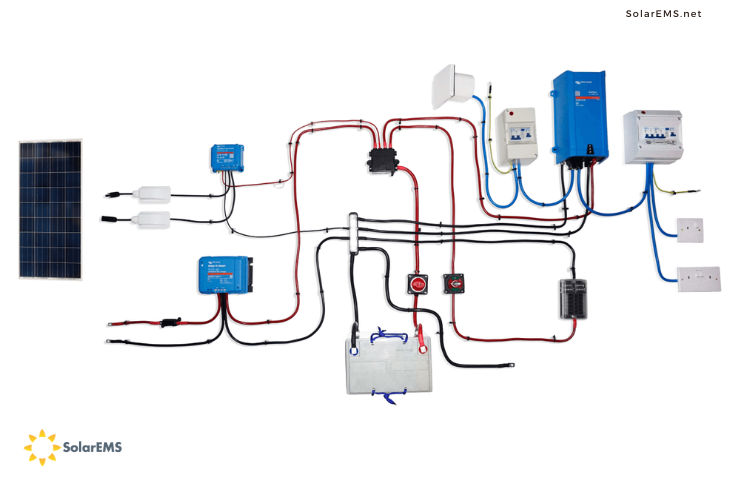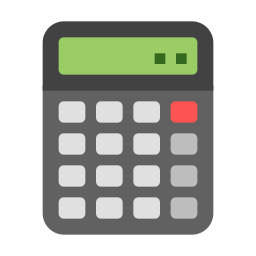Have you ever wondered how current a 2000 watt inverter draws? I was curious too, especially when I started using an inverter for camping trips and power outages. After some research and calculations, I learned a lot about how inverters work and their power requirements. A 2000-watt inverter is capable of delivering 2000 watts of continuous power, but the actual amount of current it draws depends on the voltage of the battery it is connected to and the efficiency with which the inverter converts energy. In this article, we are going to learn everything about how many amps a 2000-watt inverter draws.
What is an inverter charger?

An inverter charger is a device that works both as an inverter and a battery charger in one unit. It is commonly used in off-grid solar power systems, RVs, boats, and backup power systems. The inverter converts DC (direct current) power from a battery bank to AC (alternating current) power that can be used to power AC appliances. The charger charges the battery bank from an external AC power source such as a generator or grid power.
Inverter chargers offer several advantages over separate inverters and chargers. They are more efficient, take up less space, and are easier to install and use. They also offer advanced features such as battery monitoring, automatic transfer switching, and programmable charging profiles that can extend the life of the batteries and improve their performance. Inverter chargers come in different sizes and capacities to meet different power needs, from small systems for powering a few appliances to large systems for running an entire house or business.
The formula for calculating an inverter’s continuous amp rating
The formula for calculating an inverter’s continuous amp rating is I = P ÷ V
where I is the continuous current in amps
P is the inverter power in watts,
V is the inverter voltage in volts.
This formula helps determine the maximum amount of continuous electrical current an inverter can supply at its maximum load. It is important to calculate the continuous amp rating of an inverter to ensure that it can handle the electrical demand of the devices it will be powering without overheating or tripping its internal protection mechanisms.
How many amps does a 2000 watt inverter draw?
A 2000 Watt inverter could draw up to 240 Amps from a 12V battery bank, up to 120 Amps from a 24V battery bank, and up to 60 Amps from a 48V battery bank. However, these values could vary from 75-95%.
Formula:
Maximum Amp Draw (Amps) = (2000 Watts ÷ Inverter’s Efficiency (%)) ÷ Lowest Battery Voltage (V)
Maximum Amp Draw (Amps) = (2000 Watts ÷ 85%) ÷ 40 V
Maximum Amp Draw (Amps) = (2000 Watts ÷ 0.85) ÷ 40 V
Maximum Amp Draw (Amps) = (2352 Watts) ÷ 40 V
Maximum Amp Draw (Amps) = 58.8 Amps
So, in this example, the 2000W inverter could draw up to 58.8 Amps of current from the 40V battery bank when it is running at maximum output.
Knowing the maximum amp draw of a 2000 Watt inverter can help determine the appropriate wire size for safe and efficient operation.
2000 Watt Inverter Amperage Calculator

Disclaimer: Note that the results can be used for guide purposes only as they are estimated results. It is advisable to consult a professional.
How many batteries are for a 2000W inverter?
The number of batteries needed for a 2000W inverter depends on the battery capacity.
To calculate the battery size needed, you can use the inverter-battery size calculator or the following formula:
The formula for calculating the battery size needed for an inverter is:
battery size (Ah) = (P ÷ V x t) ÷ DOD
where:
P = inverter power rating (watts)
V = battery voltage (volts)
t = expected runtime for appliances (hours)
DOD = battery depth of discharge (expressed as a percentage)
This formula takes into account the power requirements of the inverter, the expected runtime for appliances, the battery voltage, and the depth of discharge of the battery to calculate the size of the battery bank needed to power the inverter.
What size inverter chargers do I need?
- Start by calculating the maximum load you expect to draw from the system. This will include all of the appliances, lights, and electronics you plan to use at the same time. Add up the total watts for all of these devices.
- Next, consider the charging source available to you. If you will be connected to the grid, you may only need a smaller inverter charger that can handle the loads you expect to draw. However, if you plan to use solar panels or a generator to charge your batteries, you will need a larger inverter charger to handle the larger loads.
- The size of your battery bank will also play a role in determining what size inverter charger you need. A larger battery bank will require a larger inverter charger to charge it efficiently.
- Based on your calculations, you can choose an inverter charger that meets your needs. Keep in mind that it’s always better to choose a slightly larger inverter charger than you think you need. This will give you room to grow as your energy needs increase and will ensure that your system can handle unexpected loads without overloading.
Things to consider when purchasing an inverter charger
- Consider the total wattage needed for all the devices that will be connected to the inverter charger. Choose an inverter charger with a continuous output rating that is greater than the total wattage required by all connected devices.
- Determine the voltage of the battery or batteries that will be used to power the inverter charger and make sure it matches the inverter charger’s input voltage.
- Check that the inverter charger’s output voltage is compatible with the devices you plan to connect to it. In North America, for example, most devices are designed to run on 120V AC power.
- Consider the type of battery or batteries that will be used to power the inverter charger. Some models are designed to work with lead-acid batteries, while others are compatible with lithium-ion batteries.
- Choose an inverter charger with a charging method that suits your needs. Some models can be charged from an AC power source, while others can only be charged from a DC power source.
- Look for an inverter charger with an automatic transfer switch that can quickly switch between AC power and battery power in the event of a power outage.
- Check for safety features like overload protection, short circuit protection, and over-temperature protection.
- Some inverter chargers can be monitored remotely using a smartphone app or other device. Consider whether this feature is important to you.
- Choose a reputable brand with a good track record for quality and reliability. Look for an inverter charger with a warranty that covers parts and labor for at least one year.
Conclusion
Understanding how many amps does a 2000 watt inverter draw is important. A 2000 watt inverter can draw a significant amount of current, especially at full load. It’s important to make sure your battery can handle the amperage draw and to use the appropriate gauge wiring for the connections. Knowing the power requirements of your inverter and devices will help you plan your power needs and avoid overloading your system. Also, do proper research if you are considering buying an inverter.
Frequently Asked Questions
What size inverter do I need for my caravan camping off-grid setup?
The size of the inverter you need for your caravan camping off-grid setup depends on the appliances you plan to run. A 1000-1500 watt inverter should suffice for basic needs like charging devices and running small appliances, while a 3000-5000 watt inverter may be needed for larger appliances like air conditioners or microwaves.
What’s the difference between 1000w and 2000w inverters?
The main difference between a 1000W and 2000W inverter is their power output capacity. A 1000W inverter can supply a maximum output of 1000 watts, while a 2000W inverter can supply a maximum output of 2000 watts. Therefore, a 2000W inverter can handle more power-intensive devices than a 1000W inverter.
What inverter do I need to run a microwave?
To run a microwave, you need an inverter with a minimum power output of 1000 watts, which is the standard power requirement for most microwaves. Make sure to check the microwave’s manual for specific power requirements and choose an inverter that can handle the load.
How to calculate battery size for inverters of any size?
To calculate the battery size for an inverter, multiply the run time in hours by the inverter wattage to get the total watts. Then, divide the total watts by the DC voltage to obtain the amps required. It’s recommended not to fully deplete the batteries, so a larger battery may be necessary if the total amps approach the battery’s size
.

